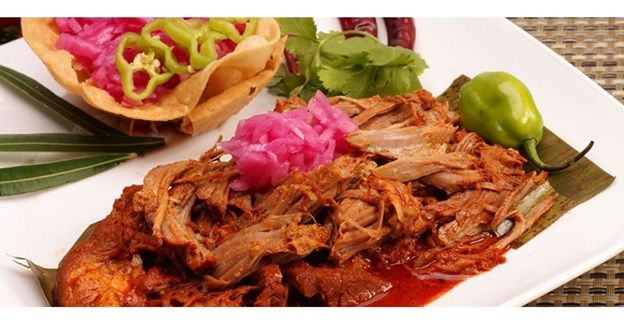It’s time for another weekend getaway, this time to Sisal, in the state of Yucatan. This quaint seaside town features a beautiful coastline, a charming main street full of bright colors and incredible nature sanctuaries. Continue reading
Tag Archives: yucatan
Weekend Getaway: El Cuyo, Yucatan
It’s time for another weekend getaway! This week let’s travel to El Cuyo in Yucatan – a remote fishing village on the tip of the peninsula, known for its incredible flora and fauna. Continue reading
Mexico’s Yucatan Peninsula: Gaining Independence
There is plenty of visual evidence regarding Spaon’s influence in the Yucatan Peninsula. Spain conquered and colonized the Yucatan cities in the early 1500s, continuing their reign for the next three centuries. In this final episode of our Yucatan series, we will provide short briefs detailing historical markers from then until now.
Miguel Hidalgo: The First Step to Independence
Miguel Hidalgo was a Roman Catholic Priest who had had enough. In 1810, he became disgusted with the treatment of the poor that lived in the area. The Spanish government surpressed the Mexican people trying to make a living in their own country. Miguel Hidalgo called upon his fellow countrymen in what was to become Mexico’s most famous speech, The Cry of the Dolores. He organized and lead the revolt against the Spaniards with nearly 90,000 farmers and civilians armed with unconventional weaponry. The well-armed Spanish military eventually stopped them at the Battle of Calederon Bridge. The opposition finally captured Hidalgo and executed him on July 30, 1811.
During the French Revolutionary Wars, Napoleon’s mighty forces finally penetrated Spain and its rule over Mexico. In the meantime, the Yucatecans began to yearn for freedom. The Mexican drive for independence was in full swing after the death of Miguel Hidalgo. Opposing leaders were eventually imprisoned or executed. However, the stride towards freedom was survived by guerilla war tactics, led by Vicente Guerrero. Consequently, it all started to take a toll on Spain’s remaining military presence. The elite and monarchy who relocated to what was known at the time as New Spain began to show support for the rebels and the independence for Mexico.
INDEPENDENT MEXICO
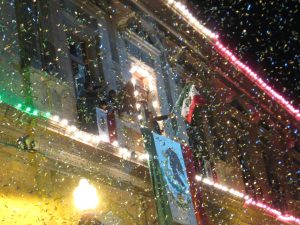
Mexico claimed its independence on September 27, 1821. The country celebrates their independence on September 16, the day of the Cry of Dolores in 1810. The people of Mexico formed the Mexican Empire upon independence. At the time, this included the territory of Belize. However, in 1824 the Monarchy-styled government gave way to the First Mexican Republic. Mexicans had to defend their freedom over financial matters on May 5th, 1862, which is known as Cinco de Mayo. At the Battle of Puebla, against all odds, the Mexican army amazingly defeated a well-trained and equipped French (Empire) army.
Beacuse of this, Mexicans were living in a struggling country, desperatly trying to recover. Spain had torned Mexico from its native roots and thrown into a turmoil by centuries of foreign occupation. After gaining its independence, establishing a government, and rekindling centuries of interrupted traditions takes time. Mexico had to reestablish before entering into a two-year war with the United States in 1846. Mexico finally settled on 31 federated states and is the fifth largest country in the Americas. It is also the 13th largest independent state in the world.
Valuable History in the Yucatan Peninsula
The Yucatan Peninsula holds so much valuable history, along with its ever-important topographic environments. From its dense jungles to arid plains and beautiful coastline that hugs the Caribbean Sea, the Yucatan Peninsula has earned the reputation as a must-visit destination. In the 60s and 70s Mexico started to be an exotic retreat for many of the United States’ rich and famous, which continues today. Unsurprisingly, Mexico’s economy positions part of its financial stability around many elements, tourism being an important one.
When visiting the area, knowing a little bit about the history of the Peninsula and its Mayan ancestry will help you understand its deep rich culture. The Yucatan Peninsula offers plenty of family entertainment that includes exciting adventures, ancient ruins, and world class beaches. Don’t forget to enjoy other such amenities like fabulous cuisines, a festive atmosphere, and warm welcoming from the Mexican people as well.
Read our previous articles, Spain’s Conquering of the Yucatan Cities and Capital of the Yucatan Cities to learn more about Mexico’s amazing history.
At Top Mexico Real Estate we have the most fascinating properties throughout the Yucatan Peninsula for you to enjoy the rich history the region offers. Be it new popular areas like Playa del Carmen or old charming places like Merida, we can find your dream home for you.
And remember, at Top Mexico Real Estate…we make it happen!
Mexico’s Yucatan Peninsula – Spain’s Conquering of the Yucatan Cities
Spain’s conquering of the Yucatan cities
In 1531 Spain discovered the ancient town of Chichen Itza. This pre-Columbian city – Terminal Classic period – circa AD 800-900, was one of the largest Mayan cities of its time. With Spain slowly conquering the surrounding cities, an alliance of eastern providences formed a resistance and launched an attack on the Spanish held town of Campeche. Spain ended up returning to Campeche in 1541 – 42 and set up a town council. Again, the eastern alliances put together an offensive attack in 1546. Their efforts this time around were to no avail and defeated rather easily in one battle. This marked a complete conquest of the region – northern Yucatan.
With total Spanish dominance, religion became the focus of the Roman Catholic Church. In the 17th century, the Franciscan Missions were in full stride converting the ‘pagan’ worships of the remaining indigenous Mayans to Catholicism. Meanwhile, in 1697 Spain finally defeated the city of Nojpeten – the Capital of Guatemala. This historic event marked the last native kingdom in the Americas to succumb to Spanish rule.
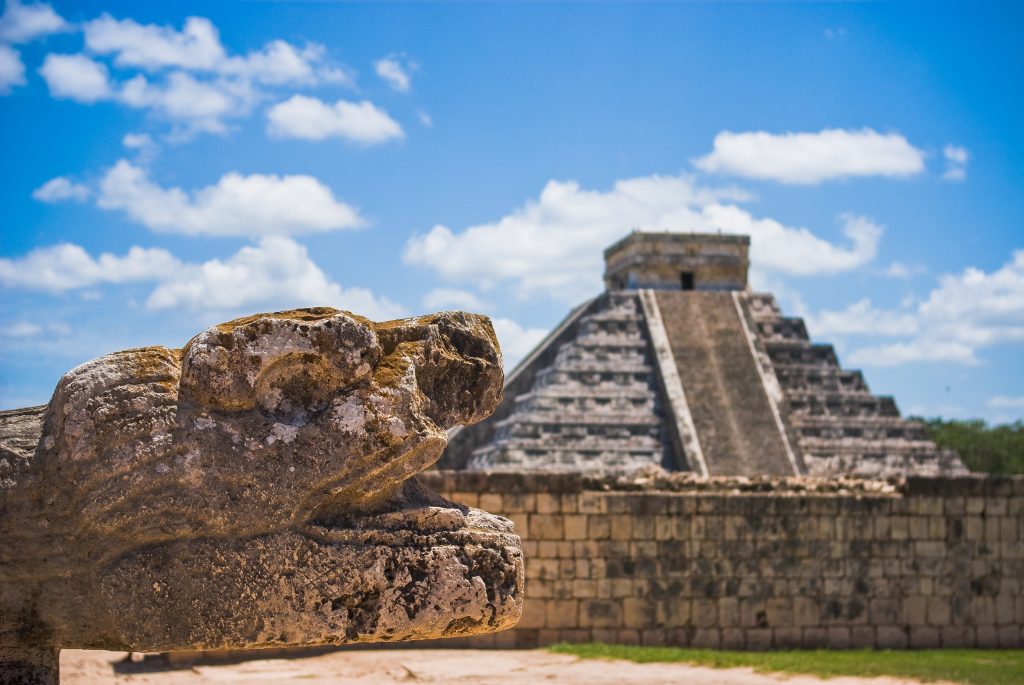
Spain now controlled most, if not all of the Yucatan state
The colonizing of the Yucatan was in full swing. The migration of the curious, opportunist and adventurous Europeans started to flood the area. The Yucatan’s terrain can be somewhat between its beautiful shoreline and the semi-arid inland areas. The western and northern coastlines offer white-sand beaches and Caribbean fed waters that flow into the Gulf of Mexico.
Several parts of the Yucatan’s topography aren’t so forgiving. To the south is the state of Campeche and to its east is Quintana Roo. Between these two border states lies a variety of terrain. This was an ecosystem that isn’t all that familiar to the settlers who arrived at the new-found land. The inner-arid landscape can be difficult to navigate. Especially when you come from lush rolling hills, wooded areas, and a mild to a cooler climate. With the peninsula being surrounded by water from the west, its protruding tip and eastern points, the summer months are uncomfortably hot and very humid.
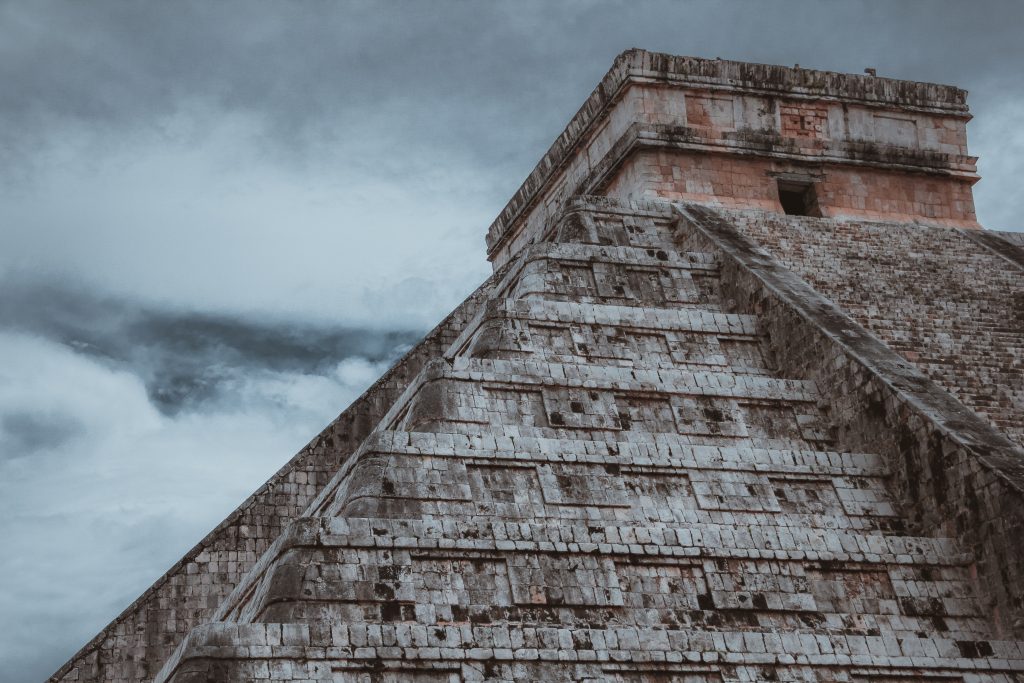
Mayans opposing Spain’s conquering presence
Newcomers to the settlement had to always be cautious whenever traveling outside their residing city limits. Even though the indigenous natives knew they had been defeated, there were still several pockets of rebelling Mayans who opposed Spain’s conquering presence. The Spaniards preceded to dismantle many of the Mesoamerican civilization’s sacred temples. They used the carved stones to build many of Merida’s structures that still remain today. They also relentlessly imposed Catholicism on the Mayan people. This created unsettling tension between the exiled Mayan religious leaders and the Catholic priest.
Finally, without going into more detailed events, by the 17th century, Spain now had the right to declare the Yucatan Peninsula as part of its vast empire that spread across America.
This is a good place to end our second article in the three-part ‘Mexico’s Yucatan Peninsula’ series. The final episode will give you a look at how and when Spain released its hold on Mexico. Their independence was well deserved after spending several centuries of repeated efforts to free themselves from the Spanish and French rule.
Read here our previous article “Mexico’s Yucatan Peninsula – Capital of The Yucatan Cities“
Mexico’s Yucatan Peninsula – Capital of The Yucatan Cities
Mexico’s Yucatan Peninsula has many historical events, early cultural influence, and the indigenous humanity that is native to the area. Visiting this part of Mexico – northern Yucatan Peninsula brings out the curious side of many historians. There is so much to see and explore in a land that has experienced so much history throughout its existence. The Mayan culture has endured many changes throughout the millennium but still has such an influential status in the region.
Yucatan Peninsula – The Mayan Indians
The Mayan Indians arrived in the Yucatan Peninsula, which today is the state of the Yucatan, around 500 BC – 250 AD. Evidence of these dates lie in the archeological sites of Coba, Dzibanche, and Kohunlich. This ancient but very highly-advanced civilization showed signs of a suffocated society that developed an infrastructure that operated very similar to today’s modern cities. The Mayans were also very innovative farmers who knew how to enrich soils and use the landscape to their advantage.
The Mayan culture mingled amongst other indigenous tribes that were inherent to the area during the 10th through the 13th centuries. Spain invaded the Yucatan Peninsula during the 16th century, which interrupted the Mayan civilization. When Spain finally conquered the Yucatan region in 1537, they were on their way to ruling the region for almost three centuries. The Spaniards brought their off-shore influences to a culture that knew nothing about the opposing foreigners.
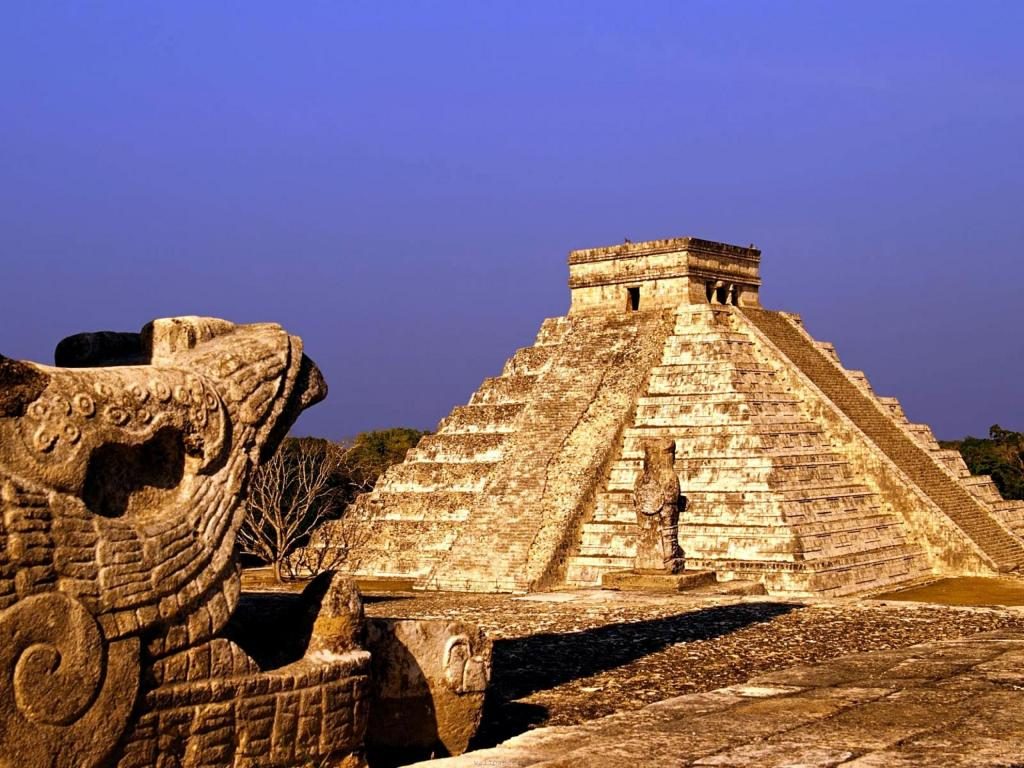
Spanish influence on the Mayan culture
Spain wanted to change the Mayan culture to their way of thinking. They imposed their social rule, economic posture, and the ever-expanding Christian faith – Catholicism. Many of the Mayan’s centuries-old books and documents were lost and/or destroyed during the Spanish conflict. When visiting the city of Merida today, much of its structures were built with centuries-old Mayan temples and pyramids carved out stones.
Spain created new colonies in a region that offered several advantages that included an alternate shipping port that created new tariffs and tax revenue that supported its vast empire. Not all the Mayan tribes gave into Spain’s efforts to overthrow their homeland. There were still pockets of resistance towards the Spaniards. The Mayan Indians utilized the element of surprise to their favor when warring. The Indians used handmade spears, bows and arrows and stones against the well-equipped conquistadors. However, the Spaniards brought diseases to the region that took many Mayan lives.
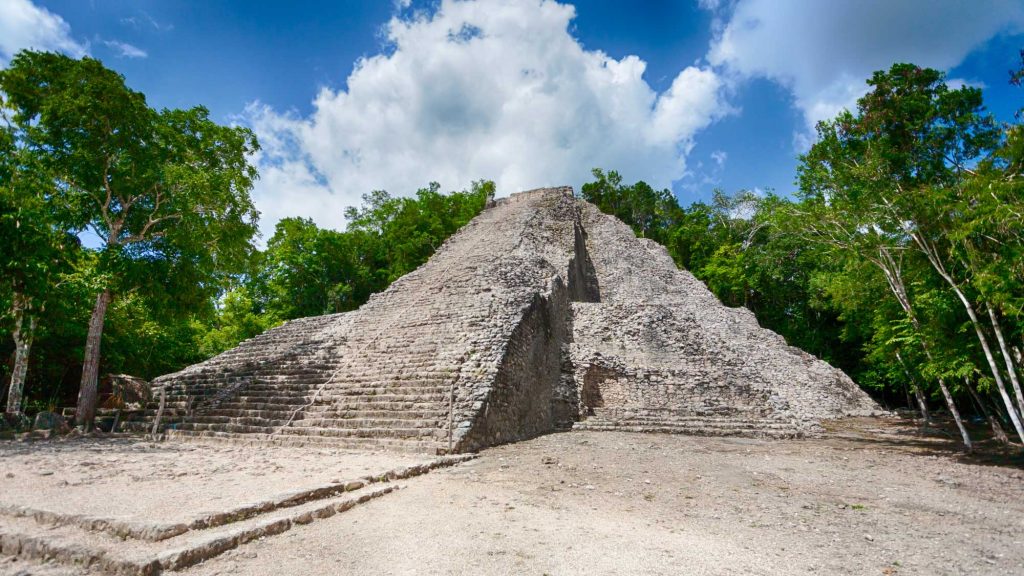
How Spain took control over the Yucatan state
Spain’s Francisco de Montejo y Alvarez, a captain who commanded four Spanish inquisition ships, return to the Yucatan in 1528. He tried to capture the eastern coast of the peninsula – Tulum & Chetumal, with little to no success. He was met with overpowering resistance and was forced to retreat back to Merida. Francisco was reassigned to search out further possibilities south. Spain set up township counsels in Campeche and Merida in 1541 – 42. The Conquistadors eventually moved their forces south through what is now Central American. At this particular point in time, Spain was gaining control over the Yucatan state. Spain’s King V, – Holy Roman Emperor, announced Francisco de Montejo y Alvarez as the Captain General of the Yucatan.
At this point in the article, we are going to end this segment. We hope you have enjoyed this first portion of a three-part series article. Stay tuned for part 2 coming soon.
If you have any question regarding real estate in the Riviera Maya, please let us know! We’ll be happy to help you. Remember, at Top Mexico Real Estate… We make it happen!
Christmas Dinner with a Twist: Cochinita Pibil!
Christmas Dinner with a Twist: Yucatecan cuisine is the delicious result of a culinary mix that combines Mayan, European, Caribbean and Cuban influences. The culinary delights of the region are made of an exquisite blend of Mexican and European flavors, favoring the use of pork and chicken for their traditional recipes.
A bit of history will explain the strong European influence: the Yucatan Peninsula was considered inaccessible and far from the rest of Mexico, there were only a few roads and they were very dangerous. Most of the commerce and transportation was made using ships with cultural and commercial dealings with Europe, New Orleans and Cuba; influencing the Yucatecan clothing, architecture and cuisine.
If you want to celebrate your Christmas dinner with a twist, why not prepare the most traditional dish in the Peninsula?
We present: Cochinita Pibil, a Yucatecan delight that requires very little prep and will surprise all your guests with the delicacy of the flavors and the juiciness of the meat.
Christmas Dinner with a Twist: Cochinita Pibil
Ingredients (servers 10 – 12):
– 2 leaves of banana, you need to roast them on the stove so they become softer (you can get them in your local supermarket, they are big folded green leaves)
– 1 ½ kilo or 3.3 pounds of pork leg
– ½ kilo or 1 pound of pork loin with rib
– 200 grams or 7 ounces of achiote seasoning (sold in every supermarket, outside of Mexico buy it online or in Latin stores)
– 1 cup sour orange juice or mix half vinegar and half fresh orange juice
– ¼ teaspoon ground cumin
– 1 teaspoon dried oregano
– 1 teaspoon white pepper powder
– ½ teaspoon ground black pepper
– ½ teaspoon ground cinnamon
– You might add coarsely ground allspice to taste
– 3 cloves garlic smashed
– ½ teaspoon chili powder
– Salt to taste
– 125 grams or 4.4 ounces of lard/ butter
Sauce:
– 8 radishes well washed and finely chopped
– 1 small red onion, finely shredded
– 4 habanero peppers finely chopped
– ½ cup finely chopped cilantro
– 1 cup sour orange juice
– Salt to taste
Preparation:
- Get a baking dish big enough to hold the meat and cover it with the roasted banana leaves, leaving it long enough to wrap the meat.
- Place the meat pieces in the baking dish and use the leaves to cover everything well.
- Dissolve the achiote paste in the sour orange, then add the spices and pour this mix on the meat.
- Marinate the pork for at least eight hours or overnight in the refrigerator.
- Once you are ready to cook the pork, melt the lard or butter and make sure to cover all the meat, rewrap the banana leaves and cover with foil.
- Bake in a preheated oven at 175 °C or 350 °F for 1½ hours, the meat has to be so soft that almost falls apart.
- Shred the meat with a fork and serve with the sauce and plenty of tortillas!
Sauce:
1. Mix all the ingredients and let them marinate for at least three hours.
Presentation:
Use a piece of banana leave to cover the bottom of a serving dish, place the Cochinita on top and garnish with some red onion or cilantro leaves.
Hints and tips:
Remember that habanero is an extremely hot chili, you need to warn your guests and let them add the sauce to taste, accompanied by corn tortillas.
One of the beauties of Cochinita Pibil is that is not only a very popular dish, but also the leftovers can be eaten in tacos, tortas, fried tacos and so on.
Also, some people prefer to cook the Cochinita in the slow cooker, which is possible by lining the cooker with the banana leaves. Then you need to pour ½ cup water around the meat, fold up the banana leaves to roughly cover everything, then turn on the slow-cooker. Slow-cook for 6 hours until the meat is fall-off-the-bone tender (the dish can be held on a slow-cooker’s “keep warm” function for an additional 4 hours).
Top Mexico Real Estate is your one stop destination for everything about living in Mexico, browse our website and find the house of your dreams!
Top Mexico Real Estate, We Make it Happen!
You Won’t Find This in the US! The Etiquette of Petty Thieves in Mexico
I’m always telling people that crime and safety, generally speaking, are not worse problems in Mexico than in the United States and most other countries – especially in the tourist areas. Yet, it’s only fair (and helpful to any newcomers) to acknowledge that petty theft is in fact one of the few crimes that is worse in Mexico, and that people need to take some common-sense precautions to avoid it.
Basically, what it boils down to is don’t put your wallet in your back pocket, and don’t carry items of considerable value in plain sight.
However, this is not the point of today’s post. The point is that in Mexico, in many cases, even petty thieves have a kind of an “etiquette” of how to treat the people they are robbing.
Consider this story that a friend of mine told me.
This (Mexican) friend of mine was in the old colonial downtown of Mexico City. (Mexico City is actually relatively low in crime, even compared to large U.S. cities, and always listed on the “green light” list of safe places to travel in Mexico – but, again, that’s a side point.)
He and a group of his friends started off a friendly chat with some strangers. At some point in the conversation, these strangers informed them that they were going to rob them! (You know, a nice friendly part of every daily conversation …) They were also informed that they had others waiting around the corners to get them if they tried to run away. If they just cooperated and gave up their valuables, they would walk away safely. Generally, in Mexico, cooperation is the best approach to take if you do find yourself the victim of petty theft, so these guys opened up their wallets, handed over their cash, their cell phones, etc.
hey got to this friend of mine. He didn’t have a cent on him. The thieves took a look in his wallet to confirm that he was as cash-less as he claimed to be. Satisfied that this guy really had nothing to rob, and didn’t even have a few pesos for lunch, he reached into his back pocket and pulled out a subway ticket.
“There you go, brother,” he said handing him the ticket, “now you can get home for lunch.”
The thieves made off with the valuables, and these guys were free to go home – without any cash, of course!
But imagine that; a thief feels sorry for you and gives you a subway ticket to get home!
I’ve heard other similar stories where a petty thief is convinced that their “victim” has less than they do, so they actually give that person something! It sounds ironic, but now and then, it does happen.
Now, I have to point out that someone who looks like a foreigner (most expats) will usually have trouble convincing a thief that he is needier than the thief. Also, these stories are most certainly the exception rather than the rule. But the point is, that as far as I have heard, this would simply never happen in the U.S., not even if the thief thought the victim was worse off.
Mexican petty thieves are not someone you want to bump into, but they do have their etiquette.



